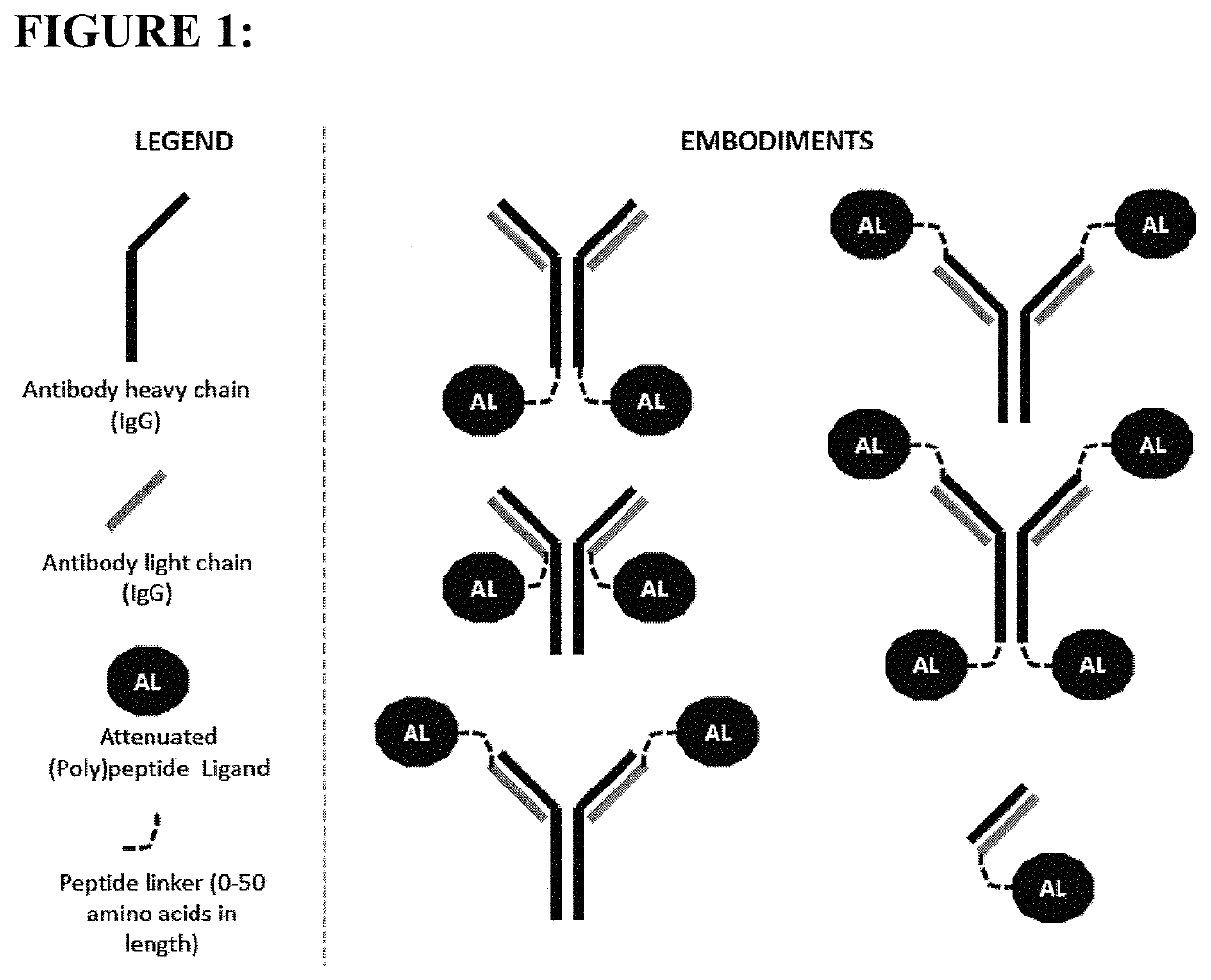Fusions of antibodies to CD38 and attenuated interferon alpha
a technology of attenuated interferon and fusion, which is applied in the field of polypeptide constructs, can solve the problems of toxicity when administered to human patients, many ligands are not suitable as drug candidates, and poor tolerance, and achieves the effects of reducing the affinity of ligands, reducing the activity of non-target antigen-negative cells, and facilitating drug delivery
- Summary
- Abstract
- Description
- Claims
- Application Information
AI Technical Summary
Benefits of technology
Problems solved by technology
Method used
Image
Examples
Embodiment Construction
[0111]The constructs of the present invention are antibody-attenuated ligand constructs, which show an elevated antigen-specificity index with respect to activating signaling pathways due to the action of the attenuated ligand on a cell surface receptor. These constructs are based on the surprising discovery that, in the context of an antibody-ligand construct, the ligand portion can be mutated in such a way that the ligand activity on antigen-negative cells is dramatically attenuated, while the ligand activity on antigen-positive cells is only modestly, if at all, attenuated. Such constructs display one, two, three, four or five orders of magnitude greater potency on antigen-positive cells compared to antigen negative cells than does the free ligand. In one embodiment, the antibody-attenuated ligand construct retains at least 1%, at least 10%, at least 20%, at least 30%, at least 40% or at least 50% of the potency on antigen-positive cells as the non-attenuated free (i.e. not attac...
PUM
 Login to View More
Login to View More Abstract
Description
Claims
Application Information
 Login to View More
Login to View More - R&D
- Intellectual Property
- Life Sciences
- Materials
- Tech Scout
- Unparalleled Data Quality
- Higher Quality Content
- 60% Fewer Hallucinations
Browse by: Latest US Patents, China's latest patents, Technical Efficacy Thesaurus, Application Domain, Technology Topic, Popular Technical Reports.
© 2025 PatSnap. All rights reserved.Legal|Privacy policy|Modern Slavery Act Transparency Statement|Sitemap|About US| Contact US: help@patsnap.com



